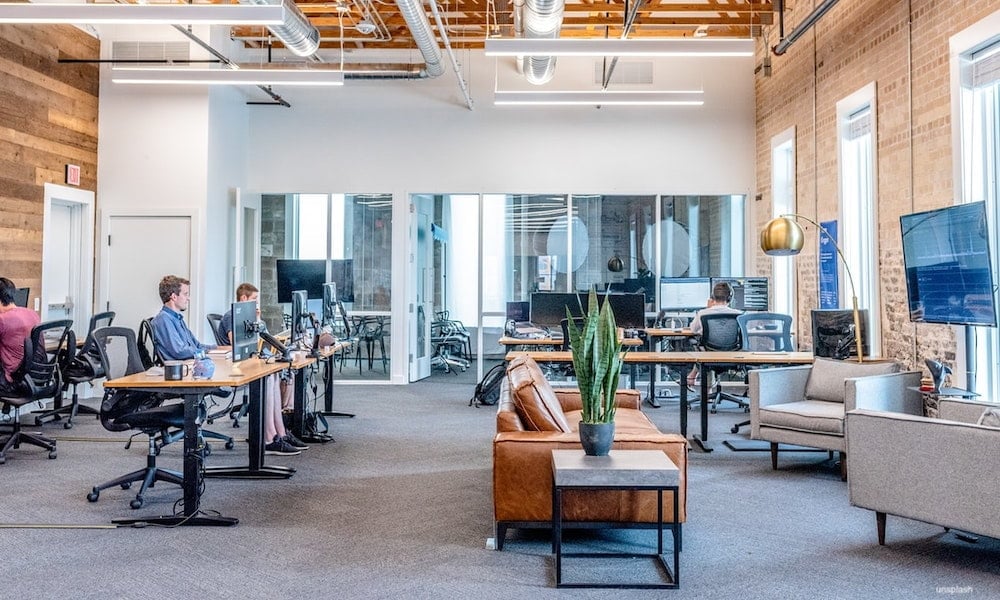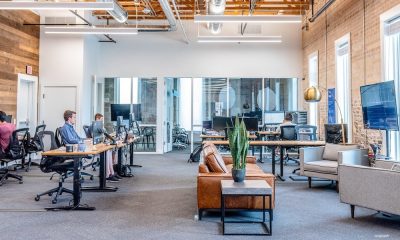Innovation
Office Design That Promotes Health and Wellbeing

The prevalence of chronic diseases such as heart disease, obesity, cancer and diabetes is estimated to cost the US economy around $1.1 trillion in lost productivity due to work absenteeism. Poor work environments and conditions are taking their toll on people.
Workplaces with a lack of natural light, and fresh air, overcrowding and poor quality furniture affect worker productivity. Also working long hours, and a lack of breaks doesn’t actually increase productivity. We are just not as active as used to be, due to advancements in transport, equipment and of course we can not forget what technology has given us nor what it has taken away. Therefore sedentary jobs, working longer hours without adequate downtime to get moving are major contributors to employee sickness and absenteeism.
In recent times there has been more focus on health and wellbeing in the workplace, and it’s been driven by the top, i.e. stakeholders like Governments, and business leaders.
The GDPs of countries depend on their subjects working and collective business productivity. The catalysts for change is the promise of making more money, and it just so happens that people need to be well and healthy, so they spend their work hours at work rather than at home or in the hospital to make it happen.
The medical industry is always keen to research and find solutions to prevent illnesses. There’s another sector keen to address issues around wellbeing at work, leading interior office designers. If change can be made to the environment, maybe they will solve some of the more common issues that contribute to ill-health, like movement, and posture.
Office Interior Design Improvements
Natural Lighting
A study in the Netherlands found that 20% of the workforce in an office environment suffer from health complaints that are directly related to a lack of natural light.
Poorly lit offices contribute to headaches, eye strain and tiredness, and is also known to impact the body’s circadian rhythm, which aids better quality sleep. Natural lighting helps to maintain a mentally healthy and fully-functioning workforce.
Improved Air Quality
Poor air quality in offices has also been found to harm the health of office workers. Issues often result from low oxygen levels, toxic gases from furniture and cleaning chemicals together with car fumes seeping in through open windows.
Companies today are being urged to install a sophisticated ventilation system that provides people with fresh air and to keep air ducts clean and well maintained.
Biophilic Elements
The term biophilia describes the innate biological connection that humans have with nature. The word has been adopted by interior designers responsible for introducing biophilic office designs into the workplace.
Studies have shown that natural environments have a positive impact on emotional restoration and lower stress, tension, anxiety, anger, fatigue and confusion. Consequently, including various elements of nature, including plants, water, stone, wood and sand is a growing office design trend.
Healthy Eating Areas
A joint study between a team of Yale researchers and Google “Food Team” noticed an increase in healthy eating habits amongst staff after making simple changes to the snacks on offer in the tech giants work canteen and vending machines.
The study determined that companies that offer employees healthier food choices help to promote a lifestyle that is more conducive to the care and wellbeing of people.
Agile office designs now incorporate fully-functioning kitchens that promote healthy eating habits together with soft seating areas where employees can take a break with a healthy snack.
Acoustic Booths
One of the major complaints coming from workers in a fully functioning office environment is the noise levels. Loud spaces make it difficult for employees to concentrate, raises stress levels and causes a reduction in productivity.
Summary
Many workplace environments are contributing to poor physical and mental well being, and there is not just one fix. A collective approach to improving workspaces, so they stop making workers unwell, anxious, moody and tired is working. While the investment in better workplace conditions may not be happening for purely altruistic reasons, it’s sure to improve job satisfaction and productivity which is a win for everyone.







